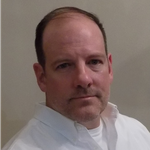- Advancing Cell and Gene Therapies in the New Normal
Gerry McKiernan (Moderator)This presentation will provide information and insight into recent and relevant regulations for ATMPs that can derail the approval process. From materials, cryopreservation, logistics, manufacturing, and facility design, this session will provide pragmatic strategies and tools to navigate the complex scientific and regulatory environment. Attendees will gain a greater understanding of ATMP cryopreservation, facility design, logistics, and regulatory classifications and will leave with the knowledge to assess complex subjects associated with ATMP production and have confidence in communication with regulators during interactions.
- An Innovative & Pragmatic Regulatory Approach to the Classification and Management of ATMP Materials
Francesco Cicirello - BioPharma Cell and Gene Therapy Challenges and Solutions in an Ever-Evolving Regulatory Landscape
Kevin SmythThis presentation will cover the following topics:
Facility designs for ATMPS 1. Regulatory Compliance 2. Cross Contamination 3. Biosafety 4. Lean 5. Operational readiness 6. Operational excellence
Unit operations 1. Equipment design for commercial scale production in a heavily regulated industry. 2. Automation - Robots and Collaborative-bots. Can we replace the human? 3. New unit operations and technologies – these need to be accommodated. 4. Closed processing and the use of Aseptic Isolators – what are the challenges? 5. Disruptive Technologies – what can we leverage from other sectors in Industry
Patient Safety 1. Sterile boundaries and aseptic processing. 2. Managing Risk 3. Quality by design 4. Supply chain challenges
Kevin Smyth, BE, MICHEME, CENG, Global Director Process Technology, Global Strategy and Technology Group, IPS-Integrated Project Services - Cell Therapy Cryopreservation and Logistics: A Cold Subject Becomes a Hot Topic
Brian HawkinsAdvanced Therapy Medicinal Products (ATMPs) are ‘living drugs’ that have proven highly effective at treating diseases once thought untreatable, such as cancer. As ‘living drugs’, ATMPs require complex chemistry and manufacturing controls (CMC) to enable efficient commercialization and maintain therapeutic consistency and potency. Part of these controls is the need to implement optimized cryopreservation protocols to ensure that ATMPs are intact and functional upon thaw at the bedside. ATMPs cryopreservation requires specialized storage conditions and distribution channels to maintain ATMPs at ultralow temperatures (e.g. below -80oC). As evidenced by the recent COVID vaccine approvals, cryogenic storage and distribution at ultralow temperatures is a challenge for the existing pharmaceutical infrastructure and a hinderance to the widespread distribution of ATMPs. Solutions to overcome the challenges of cell cryopreservation, storage, and distribution at ultralow temperatures need to be identified, validated, and implemented in order to increase ATMP adoption to the general population. This presentation will introduce the audience to the challenges associated with ATMP cryopreservation, as well as provide introduce potential solutions for how to these challenges can be tackled during ATMP development, from pre-clinical through commercialization.
Brian J. Hawkins, PhD, Chief Technology Officer, Pluristyx, Inc. - Session Break
- Tools and Methods to Enable Regulatory Excellence
Gerry McKiernan (Moderator)In a global and heavily regulated industry, pharmaceutical companies are dealing with a dynamic and complex regulatory landscape, as well as ever evolving compliance and regulatory requirements. In order to succeed, professionals need the right tools and methodologies to ensure that they are being proactive rather than reactive. This proactive paradigm shift can enable a smoother and more transparent era that avoids unnecessary costs and facilitates faster delivery to the patient. In this session, thought leaders will provide their knowledge management strategies, propose models to ensure proactive GMP compliance through comprehensive Quality Management Systems, and leverage prior data to establish product stability. Attendees will leave with a new toolbox of ideas to drive regulatory excellence, shorten timelines, and ultimately provide benefit to patients.
- Evolution of Regulatory "Expectations" • Enabler or Block to an Effective PQS?
Karen GinsburyGMPs used to say "what to do", but avoid "how to do it." There is a shift to detail-oriented "GMP" instructions, resulting from a few seminal events: Barr court case, DEG contaminated glycerol; Heparin fraud/ supply chain, data integrity and drug shortages. EU GMPs require Risk Management, yet e.g. Annex 1 revisions, Chapter 5 checklist of measures to "prevent" cross contamination leave little room for risk-based thinking. In the US, legislative hurdles to GMP revisions, result in detailed guidance. PIC/s, EU GMP Part III "Regulatory "expectations," WHO, ISO, Pharmacopoeias, inspector's personal opinion...companies are drowning in overlapping requirements/expectations. Regulator and industry appear to be in collusion to ensure failure. GMPs with all the minutiae, allow deviations and product release provided a "risk assessment " shows no impact. In stark contrast, ISO 9001:2015 makes a crucial point: One of the key purposes of a quality management system is to act as a PREVENTIVE tool." A model for an effective, risk-based thinking, #PREVENT QMS will be proposed, restoring GMPs to their rightful place and allowing controlled disruption and regeneration of our stagnating industry.
Karen Ginsbury, BPharm, MSc, Owner, PCI Pharmaceutical Consulting Israel - Taking Stability off the Critical Path of Product Development for Biological Medicinal Products
Andrew C. LennardSignificant advances have been made in recent years in our understanding of recombinant protein-based biological medicinal products, their quality attributes, the impact of the manufacturing processes and in the analytical tools. These developments allow for a more enhanced understanding of a products stability profile and the primary degradation pathways than was capable when the ICH Stability guidelines were adopted. Taking the current understanding and capabilities to characterise the critical, stability-indicating product quality attributes for biological medicinal products into consideration, alternative risk-based predictive stability (RBPS) procedures are proposed for shelf-life setting. Data indicate that the stability profile of molecules with a similar structure can behave as a class and one RBPS approach is the application of prior knowledge stability data for a given structural class of molecule.
This presentation outlines how prior knowledge stability data can be suitably selected and justified to form class-specific stability profiles that can be applied to a new molecule and assign shelf-life beyond the available real-time, real condition stability data. The approach is greatly benefited from a platform approach to product development, is similar to a methodology described in ICH Q1E and can be applied to both drug substance and drug product throughout the product lifecycle.
Andrew C. Lennard, PhD, Reg CMC, Amgen
- Modern Toolkits for Enhancing People Competency, Improving Data Integrity through Culture Metrics
Lisa Bennett (Moderator)Improvisation does not happen by itself, it happens only through change, but bringing change is a great challenge. The key to driving sustainable performance and health across all levels in an organization is a tall order, yet teams are doing this well, with new ways of revamping competency-building programs. These new approaches focus on helping employees develop the required knowledge, skills, and behaviors. This session is a must-go-to for all leaders in the operational domains because the speakers will share examples of failures. Listening to the speakers will help provide insights, tested tools, and pragmatic methodologies that will deliver for a higher success rate, regardless of the nature of the change program pursued. Aspects of leadership, elements of management, points for decision-making, must-haves for strategic planning, working in a matrix organization, and other skills related to organizational effectiveness will be the takeaways.
- The Modern Quality Professional Development Tool – Capability Uplift for Product Quality Leaders
Stephan KrauseThe modern quality professional (MQP) is scientific by using relevant data, tools and analytics to make sound judgments and pursue the true root cause in every issue. The MQP promotes effective problem-solving using a risk-based approach and understands the business and industry trends by being eager, curious, and innovative. A MQP development tool kit has been designed to create a vision of the quality organization that we aspire to. This development tool provides links to development content to support individuals in their lifelong learning journey. Focused learning towards higher capability levels may raise flexibility of resources within the Quality organization.
The product quality function is used as a case study to illustrate how the relevant tools can be effectively used to uplift individual and team capabilities. The Product Quality Leader (PQL) is a technically competent Quality professional that is expected to be experienced in leadership, management, decision-making, strategic planning, working in a matrix organization and other skills related to organization effectiveness.
This presentation will illustrate how relevant capability areas are related to specific quality role functions and how capability target levels are established. Specific examples are used to illustrate how defining and reaching higher capability levels can be measured.
Stephan Krause, PhD, Director of Product Quality, AstraZeneca - The Role of Quality Culture in Assuring Data Integrity
Christopher J. SmalleyData Integrity is coming under increasing scrutiny to assure that the information is obtained, recorded, transmitted, reported and acted on appropriately. Automation, when well designed and validated, will contribute a great deal to Data Integrity (DI), however many instances will continue to exist where data are recorded manually. Although organizations may add checking or verification activities to reduce the risk of loss of DI at that manual stage, it represents the greatest risk to DI.
The organization's Quality Culture offers the best mitigation to this risk, helping assure that the activity of recording data manually is done with integrity. Examples will be presented where operators made the wrong decision in recording data because they misunderstood the goals and objectives of the organization.
Christopher J. Smalley, MBA, MS, PhD, Compounding Pharmacist Advisor, ValSource Inc. - Session Break
- Visual Inspection • Regulatory Overview
Lisa Bennett (Moderator)Regulatory requirements are a major driving force for the development and implementation of appropriate visual inspection procedures. This session will provide an overview on visual inspection requirements; the current regulatory considerations; and the background and essential fundamentals of USP <790> criteria and <1790> guidance.
- The Changing Visual Inspection Regulatory Environment
John ShabushnigVisual inspection (VI) is a critical step in the manufacture of safe and effective injectable drug products. Global regulation and guidance continue to evolve to assure reliable supply of these critical medicines. The current global pandemic further emphasizes the importance of clear and rationale test methods and specifications. This presentation will include an analysis of US FDA recall data and a review of recent and planned changes to pharmacopeial VI and particulate chapters in the US and EU. This discussion will focus on USP <790> and <1790>, EP 2.9.20 and 5.17.2 and expected changes to EMA Annex 1.
John G. Shabushnig, PhD, Principal Consultant, Insight Pharma Consulting, LLC - Current Regulatory Considerations for the Assessment of Visible Particulates in Injectable Pharmaceuticals
Rukman S. De Silva
- Particle Investigations
Michael Schafferius (Moderator)Executing efficient and comprehensive particle investigations is critical in parenteral manufacturing. This session will provide an overview of particle investigation best practices as well as advanced particle identification techniques.
- Particle Investigation Best Practice
Robert J. MillerThe visual inspection process and the particle life-cycle strategy provide detailed particle trends, identification of special cause variation, as well as opportunities to continuously improve the overall particle load within contemporary sterile injectable manufacturing. This presentation will discuss common investigation requirements and triggering particle events to provide consistent, complete, and effective root cause analysis to ensure complete understanding of particle investigation events.
Robert J. Miller, MS, Director Sterile Injectables Technology, Pfizer Inc (Invited) - Identifying the Source of Particulate Matter in Injectables – A Case Study
Subrata ChakrabortyUnderstanding your problem well is half the solution. Today we need a bigger emphasis on the source than on the post filling detection. This presentation will include a detailed case study of particulate matter in injectables starting from its detection, analysis, actions to identify the source of contamination and subsequent remediation. This will elaborate on the opportunities to plug some of these intrinsic and extrinsic sources which contribute to particulate contamination in injectables. It will guide the participants to go for standardization of the Materials( Packaging materials, consumables, product contact and non contact parts) and Procedures (e.g. C&D, AP Interventions etc.) in an aseptic manufacturing facility.
Subrata Chakraborty, MS Pharma, Principal Advisor, GxPFONT Consulting Group - Automated Inspection
Michael Schafferius (Moderator)Recent developments in automated inspection can benefit to the patient with higher defect detection and lower false rejection rate. During AVI machine set-up phase, the opportunities and risks associated with surrogate testing will be explored. Also, the field for small scale AVI equipment will be discussed as Biopharmaceuticals are expanding.
- Placebo vs. Real Product: Opportunities and Challenges during Machine Set-up
Massimo FrassonSeveral pharmaceutical manufacturers, especially in case of greenfield production environment, need to proceed in parallel with different activities in order to reduce the production startup timing. The use of a placebo product becomes extremely helpful to simulate the real product behavior during the prototyping and testing phases. Although placebo products should process the same physical features compared to the active products, there could be some intrinsic challenges when it comes to automatic inspection. The presentation will highlight advantages and criticalities of using placebo products during the setup and validation phases of an automatic inspection machine.
Massimo Frasson, General Manager, BREVETTI C.E.A. S.p.A.
Marion F. Joannes, Meng, Project Manager, DELPHARM ST REMY - Session Break
- New Requirements of the Inspection and Packaging Process for Small Batch Sized Medicines
Christian SchererThe R&D pipelines are filled with products that target smaller patient groups compared to previous decades. In order to inspect and pack these medicines, state-of-the-art equipment and best-practices have to be scrutinized. Just-in-time delivery, cooling processes, the ability to inspect automatically as well as format flexibility impact requirements for new inspection and packaging lines. On the basis of the following examples new approaches of inspection & packaging will be envisaged: Numerous products have to be cooled under significant low temperatures. This requires space saving packaging to reduce cooling costs – and luckily there are ways to achieve that. Various parenteral dosage forms will run on the same inspection & packaging lines and demand a high flexibility in formats and fast format part changes. Processes will be completely automated to reduce human errors and avoid batch recalls. False ejects of any inspection station in the packaging line have to be reduced to avoid a costly re-inspection or disposal of the product. AI, Virtual Reality and object IDs will monitor the process quality through the process.
Christian Scherer, Executive Vice President Sales, Körber Pharma Inspection (Seidenader) (Invited) - Artificial Intelligence (AI) in AVI #1
Michael Schafferius (Moderator) - PDA Task Force Point to Consider AI Applied to VI
Romain VeillonThe purpose of this document is to educate and provide guidance to teams willing to transit to AI applied to VI. We considered to pave the road considering pitfalls along the way, rather than strong set of recommendations as this is an emerging field. The Point to consider Document has been drafted by a team of 10 PDA volunteers. In 2020, we focused in setting up the team, agreement on targeted audience, document backbone and first draft compilation. We have now 1 draft that we have started to review and consolidate. This document is based on solid data science expertise of the team. The ultimate scope is to improve confidence and trust in AI for technical teams, quality staff et regulators.
Romain Veillon, PharmD, Senior Manager, Visual Inspection, GSK Vaccines - Unsupervised Anomaly Detection and Segmentation for Visual Inspection in Highly Optimized Manufacturing Processes
David SattleggerIn recent years, we have witnessed a proliferation of deep neural networks, with unprecedented performance across various application domains. Deep learning methods generally require a large amount of labelled data for training. In particular, if their task is to find defects, they require many instances of all possible defects in order to be able to recognise them. In highly optimised manufacturing processes, however, instances showing defects are very rare. In addition, it might be entirely unclear how defects manifest themselves. This is also the case for pharmaceutical manufacturing. We therefore require ever more sophisticated and specialised methods. Methods for the unsupervised detection and segmentation of defects or, more generally, anomalies provide solutions for these type of scenarios. These methods only need defect-free samples for training and therefore require no tedious manual labelling. During inference, they are capable of recognising defects without prior knowledge of the type and nature of the defect.
David Sattlegger, Research Engineer, MVTec Software GmbH
- PDA 853.2 Environmental Monitoring Training
Marc GlogovskyTRAINING COURSE DESCRIPTION
Environmental surveillance is a tool utilized to evaluate the effect of controls on the manufacturing environment. A process to assess the cleanroom and other controlled environments of a pharmaceutical facility can serve as an adjunct to the sterility assurance program for the microbial quality of drugs.
The items addressed in this online training course include definitions, standards, surveillance support systems, system surveillance, validation systems, definitions and typical frequencies and levels.
LEARNING OBJECTIVES
Upon completion of this training course, the attendee will be able to:
- Apply current regulatory guidance to your environmental monitoring program
- Implement improved environmental monitoring procedures
- Compare and contrast new and existing environmental monitoring equipment
- Outline how to best utilize current environmental monitoring definitions
- Define key environmental monitoring concepts
WHO SHOULD ATTEND?
This training course is intended for professionals who are involved in the design and execution of an environmental monitoring program in sterile drug manufacturing.
Function Area(s): Quality Control (Analytical), Quality Control (Microbiology), Quality Systems, Quality Compliance, Manufacturing, Quality Assurance Operations, Technical Operations, Validation
Job Position(s): Analyst, Specialist, Operator/Technician, Supervisor, Manager


















